Carenado 500s Shrike Aero Commander
Introduction
The Aero Commander 500 family is a series of light, twin piston-engined and turboprop aircraft originally built by the Aero Design and Engineering Company in the late 1940s, which was renamed the Aero Commander company in 1950, and became a division of Rockwell International from 1965. The initial production version was the 200-mph, seven-seat Aero Commander 520. The models were slowly improved with their number suffix roughly reflecting the horse power of the engines.
They were used in both civilian and military roles and one was used as President Eisenhower’s private aircraft. This model relates to the more streamlined 500s version and is known as the Shrike Commander, due to the shape of the nose. 316 were built between 1968 and 1973. They have two Lycoming 290 HP engines with 80inch three blade propellors. The aircraft benefitted from a smoother ride than many private planes of the time due to having long wings and tail booms.
The Shrike Commander soon became famous for its spectacular appearances at airshows, with former fighter pilot Bob Hoover at the controls. After flying an airshow routine in his North American P-51 Mustang fighter, Hoover would fly the Shrike Commander and perform the same stunts with both engines running, then again with one engine running, and finally the whole routine with no engines running.
He would also take journalists and photographers for a flight in the aircraft pouring tea into a glass balanced on the throttle quadrant while performing a complete, perfect vertical loop, allowing the centrifugal force of the loop manoeuvre to keep the tea flowing towards the glass, even when upside-down. Web searches of Bob Hoover Shrike Commander allow access to several clips showing what this rather heavy looking aircraft is capable of. The 500s has a ceiling of 19400ft, a maximum range of 1060 nautical miles and a maximum rate of climb of 1340 feet per minute.
This model was one of those subject to the Carenado commitment to update to X-Plane 11 for free as they were released in the six months prior X-Plane 11 being fully available. Model version 1.2 is made available for both X-Plane 10.50 and X-Plane 11.
Installation and Documentation
The technical requirements are:
– Windows Vista – 7 – 10 or MAC OS 10.8 (or higher) or Linux
– X-Plane10.50 – X-Plane 11
– 2.5 GHz processor – 8GB RAM – 1GB VRAM
– 490MB available hard disk space
The download from Carenado was easy and straight forward. Whilst this review was carried out with X-Plane 11 also downloaded the aircraft to X-Plane 10.50 and both downloads went very well. Whilst it is understood that X-Plane 11 adds so much in terms of visual quality the Shrike still looks the part in X-Plane 10.50.
The download folder includes the files for both the X-Plane 10.50 and X-Plane 11 versions and when they appear in the aircraft directory of either version there is one icon conveniently marked as incompatible. For those who would rather not have this in their aircraft library these icons can be removed by the deletion of the acf file for the incompatible version within the download folder.
The documents download within their own sub folder and are very useful. The folder includes:
– 500S Emergency Checklist PDF
– 500S Normal Checklist PDF
– 500S Performance Tables
– 500S Reference PDF
– 500S Aero Commander Autopilot Operation PDF
– Recommended Settings PDFs for X-Plane 10.50 and X-Plane 11
These documents are helpful and relevant and can be used with the model as much or as little as the pilot requires in pursuit of realism. Pilots of limited experience should not be daunted by these detailed documents as the aircraft can be flown without them and their contents can gradually be introduced to the use of the model as required.
I do feel it is a pity that so much work goes in to the accuracy and presentation of the aircraft and the detail of instrumentation but no user manual is included, which shows the cockpit in detail, and what the model is capable of replicating. For experienced pilots this may seem obvious but for those learning about aircraft in general, or this particular aircraft, and with limited experience, learning by exploration, whilst interesting at times, can detract from the overall use of the model, especially in the early stages.
The cold dark start mentioned in the promotional material is assisted by the normal procedures document where engine start lists are provided. Whilst the list is useful and helpful the less experienced may find themselves searching for the instruments, levers and switches mentioned without a guide document to the cockpit. Remember to switch the main battery switch on or the procedure will not work!
Basic Flight Experience
I have not flown in an actual Shrike Commander and therefore any references to realism and authenticity relate to the immersive experience rather than my own judgement on the accuracy of sounds and presentation being close to the real thing.
The aircraft is very straight forward to fly and the model responds well to the joystick and controls either through the key board or by using the many operable buttons and levers in the cockpit. Flight is smooth and stable but sensitive enough to feel any turbulence or a heavy landing! The aircraft feels sturdy during flight and my confidence in the flight experience increased with continued use. Using autopilot during the flight is enjoyable and this provides a chance, given the high wing on the aircraft, to take in the surroundings and scenery provided by X-Plane.
The view from the cockpit during flight is good with deep windows and clear sight over the nose. The model behaves realistically on take off and requires concentration to get it right. Being a heavier aircraft than many I have flown in X-Plane I had a tendency to lose height too quickly on landing initially and had to practice to make sure I matched speed and descent to reach the runway. The aircraft climbs well and, as proved by Bob Hoover, it is far more nimble and responsive than it looks.
Engine sounds, and the effects when carrying out take off runs, are very realistic and this continues in flight through control surface sounds and a reassuring noise when the landing gear is moved up or down. Having mainly flown the Cessna 172 before it was interesting becoming accustomed to using the overhead controls as well as those in front of me.
The aircraft is provided with many working instruments and they add to the realism in flight. This model is straight forward to fly for a less experienced pilot, with the use of the various systems supplied certainly allowing for increased layers of realism and challenge for pilots of all skill levels.
Interior Modelling
The interior of the model closely replicates the photographs of the aircraft’s cockpit and cabin as seen on the internet. Being an older aircraft there are numerous updates and adaptations to the original cockpits and compared to those pictures the model does not look out of place with the modern flight management system display alongside some of the more long in the tooth instruments. Within the small menu visible in the bottom left of the screen the O ‘Options’ selection allows for instrument reflections to be shown.
These are cleverly produced and add depth to the already immersive cockpit. The window reflections provided and the shadow effects build the cockpit around the pilot. This a model of an older aircraft and that is recreated by the modelling of numerous wear and tear effects throughout the cockpit, with areas of worn paint, crease marks in the leather seats, worn carpet and a generally ‘used’ appearance. Pilots and co-pilots window catches can be used when the aircraft is stationary allowing those windows to be opened with the corresponding and appropriate change in volume and tone of the engine noise.
The rear cabin is configured for four passengers to be seated in comfortable leather seats with a working model of the fold down table provided. Various warning notices are accurately created in the cabin and remain clear when the view is zoomed in to read them. There is also a small panel on the port side of the rear cabin showing phone and mike jacks for the passengers. Time has clearly been taken to make the surfaces, whether plastic, leather or even the cabin curtain material, as realistic as possible and this attention to detail remains even when looking from the outside into the cockpit.
The doors to the aircraft are both on the port side and can be opened either by clicking on the respective door handles or by using the options menu in the bottom left of the screen.
The interior stands up to a great deal of scrutiny and investigation and I found it useful to switch on the “Show Instrument Click Regions” option in the X-Plane view menu to establish all of the interactive switches, buttons and levers that have been recreated, for example even the co-pilots arm rest can be moved. Again a cockpit handbook would really help here, amongst the documents, as inexperienced pilots would need to spend considerable time learning all of these controls and I fear some of the highly detailed modelling may go to waste without it.
The flight yokes appear initially when the aircraft is loaded but can be hidden by clicking the crest in the middle of the control. They can be re-established by clicking the base where the yoke is fixed to the cockpit floor. The cockpit is equally realistic at night with cabin and instrument lighting being controlled from the overhead panel.
The rear cabin lights can be switched on and off by their own light switches and these lights together with the white lights provided for the pilot and co-pilot add a really atmospheric effect to the rear cabin with the light cast over the seats highlighting the worn effect mentioned earlier. This model really does provide and immersive and high quality interior and care has been taken to recreate the character of the older aircraft.
The C menu in the bottom left of the screen gives several camera options to jump to. In terms of the interior of the aircraft these include Pilot view, Co-pilot view, Throttle and Instrument panel. These worked in the model downloaded to X-Plane 10 but at present it seems the upgrade to X-Plane 11 has not enabled them. Whilst nothing prevents these views being acquired via the view menu in X-Plane itself the small menu is easier, quicker and more convenient.
Exterior Modelling
When launching the aircraft without the engines started the aircraft appears with Remove Before Flight tags fitted in both engines and cones to mark the aircraft. These can be toggled on and off through the O menu to the bottom left of the screen. In keeping with the attention to detail shown in this model the ribbons in the starboard engine are reversed when seen from the front and those in the port engine are the correct way around.
When viewed from outside the aircraft is shown with a pilot and co-pilot which are both realistically modelled with independent movements. Looking into the aircraft from the outside the interior surfaces maintain their integrity and when viewed closely they keep their textures and effects.
Seven liveries are available with tail codes for aircraft in Canada, Australia and USA. All are clear and sit correctly on the aircraft. When viewed close up the lettering stays sharp and clear, even the Shrike Commander 500s lettering on the wing tips. The liveries can be changed in X-Plane flight configuration or in the O option in the small menu at the bottom left of the screen.
As this is not a new aircraft the weathering on the model is extensive but not over the top showing wear marks on the panels and more discolouration on the front of the engines and surfaces. The undercarriage is also modelled in detail, again with weather marks on the metal and changes in tyre colour. The panels of the aircraft show proper reflections including appropriate distortions and the shiny propellor hubs cleverly reflect the surroundings.
The camera menu at the bottom left of the screen allows quick movement to camera angles from Overhead, View from Rear, Wing Cam L, Wing Cam R, Tailcam and Bellycam. Again this works in X-Plane 10, but as yet the upgrade to X-Plane 11 has not enabled this though the views can be obtained via the use of X-Plane view menu.
The options menu in the bottom left of the screen allows for the operation of the baggage door, pilot’s door and the passenger door, all on the port side of the plane. The use of the doors is smooth and allows further views of the detailed modelling of the interior of the cockpit and cabin areas. The baggage area door opens under the wing revealing a realistically modelled interior. The lining material and fixings for the compartment are all on view including wear marks in the interior of the luggage area. All doors close once unselected in the menu with the handles moving as if being turned to the locked position.
Once the engines are running other features become apparent with the aircraft lights clearly and accurately modelled. Shadows and reflections remain accurate and the rotating propellors remain visible and realistic. The attention to detail both within and without the aircraft is impressive and even without flying there are numerous activities and interactions to explore.
Sound
The sounds for the model are very realistic and immersive. The engines sound good on starting and running, both from within the plane and on the outside and the tone changes appropriately when the throttle is moved. There are positive sounds for switches and knobs and the flaps and undercarriage can be heard moving. The sound quality is high and contributes to the overall experience.
Systems
The aircraft can be flown immediately without the use of the many systems provided and modelled but it is worth becoming acquainted with the various instruments supplied to add to the realism of the experience.
The autopilot is accessed by using the A selection in the small menu in the bottom left of the screen. It is not the standard autopilot but is modelled on the Altimatic iiic. The model documentation does include advice on how to use this device and actual instructions for this particular autopilot are available on line.
The autopilot can be used in isolation to set heading, altitude and trim but can also be used in conjunction with supplied X-Plane 530 Flight Management System based on the Garmin 530 with the control knob set to Nav. Once set up flight plans are input into the flight management system in the usual way and the aircraft flies smoothly and responsively. Flying in this manner allows the pilot plenty of time to view both the other systems within the aircraft and also the impressive X-Plane 11 scenery.
In the centre of the instrument panel two dials model JP Instruments EDM 760 and Shading Avionics Digiflo. These can be clicked on creating an enlarged version that can be placed anywhere on the screen in a similar way to the autopilot and flight management system. The EDM (Engine Data management) 760 is described as the most advanced and accurate piston engine management system on the market. The model does not carry out all the functions of the actual system but displays Exhaust Gas Temperature and Cylinder Head Temperature readings for the individual cylinders in the right and left engines. More information on the instrument is available on line.
The Digiflo-L is a digital fuel management system and is modelled to show the various readings the actual instrument provides. For those of us who become so involved in learning to use and appreciate the plane, whilst forgetting about fuel levels this is a very useful addition to cockpit information. This can be set to show nautical miles per gallon, gallons to destination (or next way marker on a flight plan), gallons in reserve and endurance of the aircraft in terms of hours and minutes of fuel remaining. There is also digital representation of left and right engine fuel flow.
To the lower left of the instrument panel there is a modelled version of Bendix King 574 Distance Measuring Equipment which can be controlled. Again further information on this equipment can be found on line. The aircraft transponder is modelled on a Garmin GTX 320.
Some of the comms and navigation equipment in the instrument panel is modelled on that made by Collins including a AMR-350 which provides switching for all radios and a marker beacon receiver, a VHF-251 communications transceiver, and a VIR-351 navigation receiver.
A useful guide to these instruments, published by Rockwell International, the eventual parent company of the aircraft itself, can be found online enabling full use of this equipment by more experienced pilots or, indeed, by those who wish to learn more about flying an aircraft and all it involves.
These various instruments are well modelled and as mentioned before fit in to the cockpit in a very similar way to those pictured in cockpit photographs on line. They provide useful information for those who already know how to use them and an interesting learning experience for those of us coming to terms with all instruments within an aircraft cockpit.
Summary
This detailed model creates a very realistic and immersive experience. The attention to detail in terms of the interior, exterior and instrumentation of the aircraft is very impressive. The amount of interaction with the model and its equipment allows this aircraft to be used from a basic flight simulation aircraft to fly within X-Plane up to a model representing all facets of flying.
The reflections, lighting and shadows on the aircraft add to the realism and the fight experience itself it thoroughly enjoyable. Carenado have cleverly produced a model that flies well, provides a challenge and captures the character of this older aircraft whist integrating the opportunity for the pilot to fully interact with all aspects of a flight.
More information about the aircraft can be found at the Carenado website.
Feel free to contact me if you’ve got additional questions related to this impression. You can reach me via email Angelique.van.Campen@gmail.com or to Angelique@X-Plained.com.
With Greetings,
Andy Clark
| Add-on: | Payware Carenado 500s Shrike Aero Commander |
|---|---|
| Publisher | Developer: | X-Plane.Org | Aerosoft | Carenado |
| Description: | Realistic rendition of 500s Shrike Aero Commander |
| Software Source / Size: | Download / Approximately 448MB (unzipped) |
| Reviewed by: | Andy Clarke |
| Published: | July 16th 2017 |
| Hardware specifications: | - iMac Intel i5 27" - 3.5 GHz Intel Core i5 - AMD Radeon R9 M290X 2048 MB - 16 GB 1600 MHz DDR3 RAM - Logitech Force 3D Pro |
| Software specifications: | - macOS Big Sur 11.x - X-Plane 11.5x (64 Bit) Private Use - A variety of freeware and payware airports |

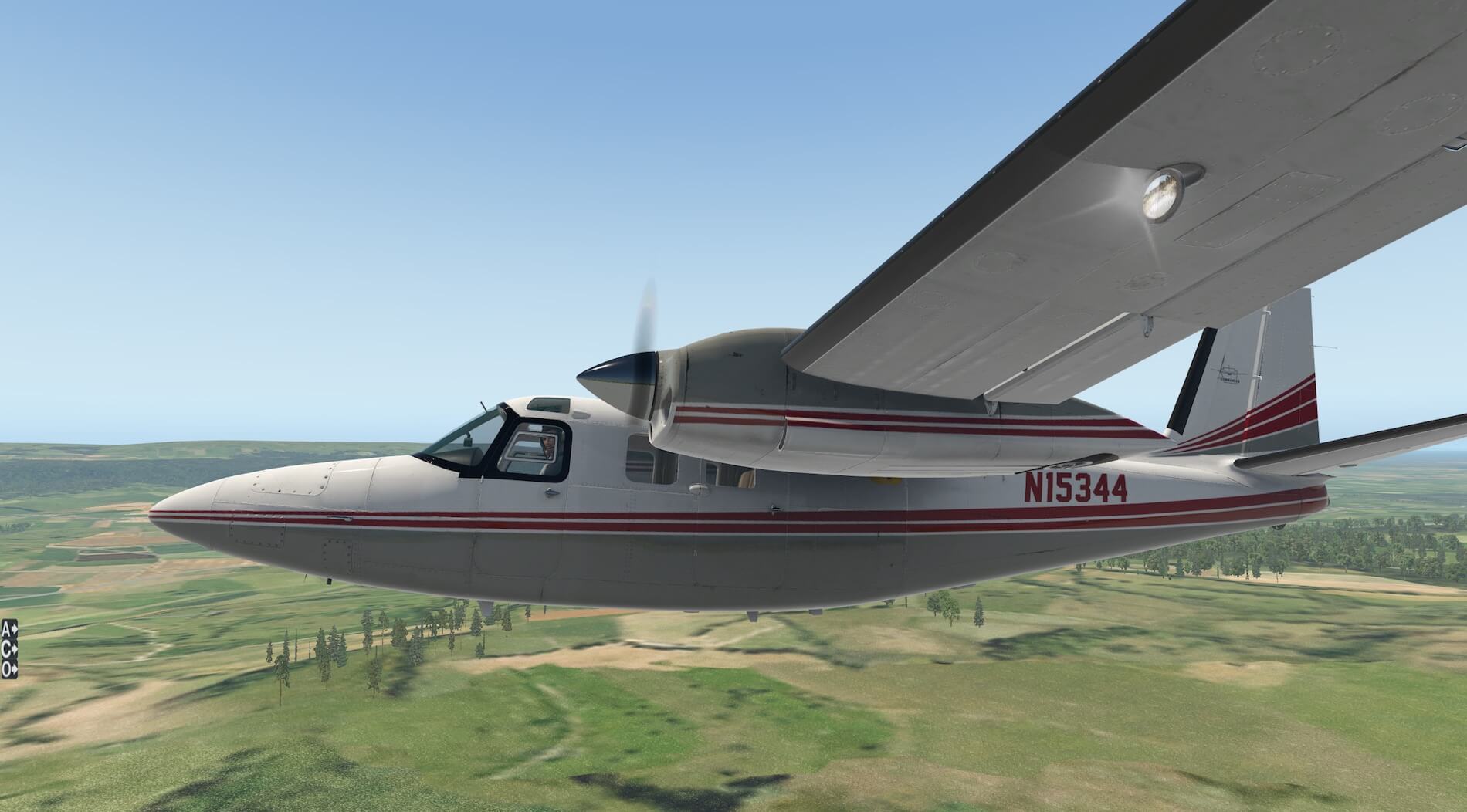



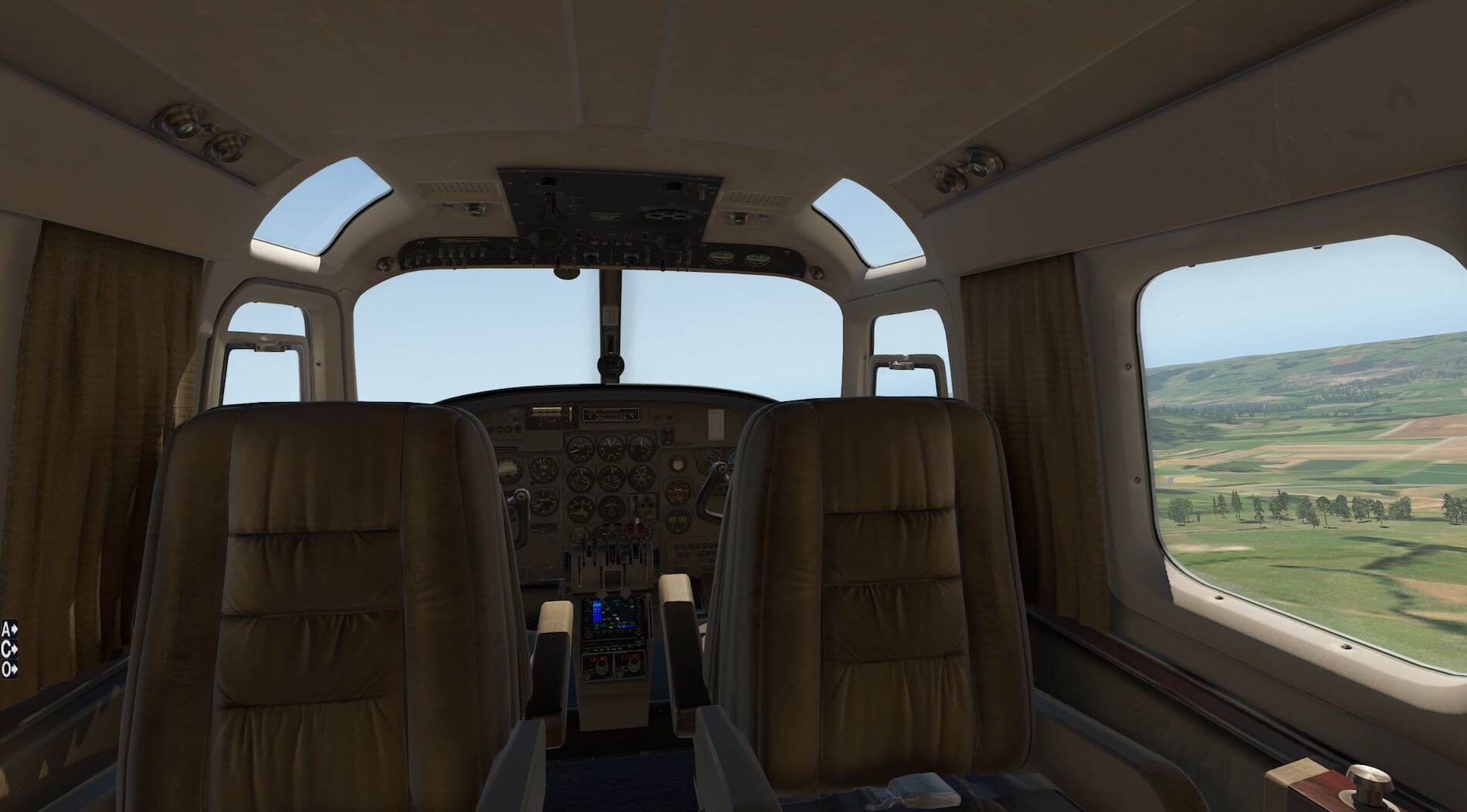


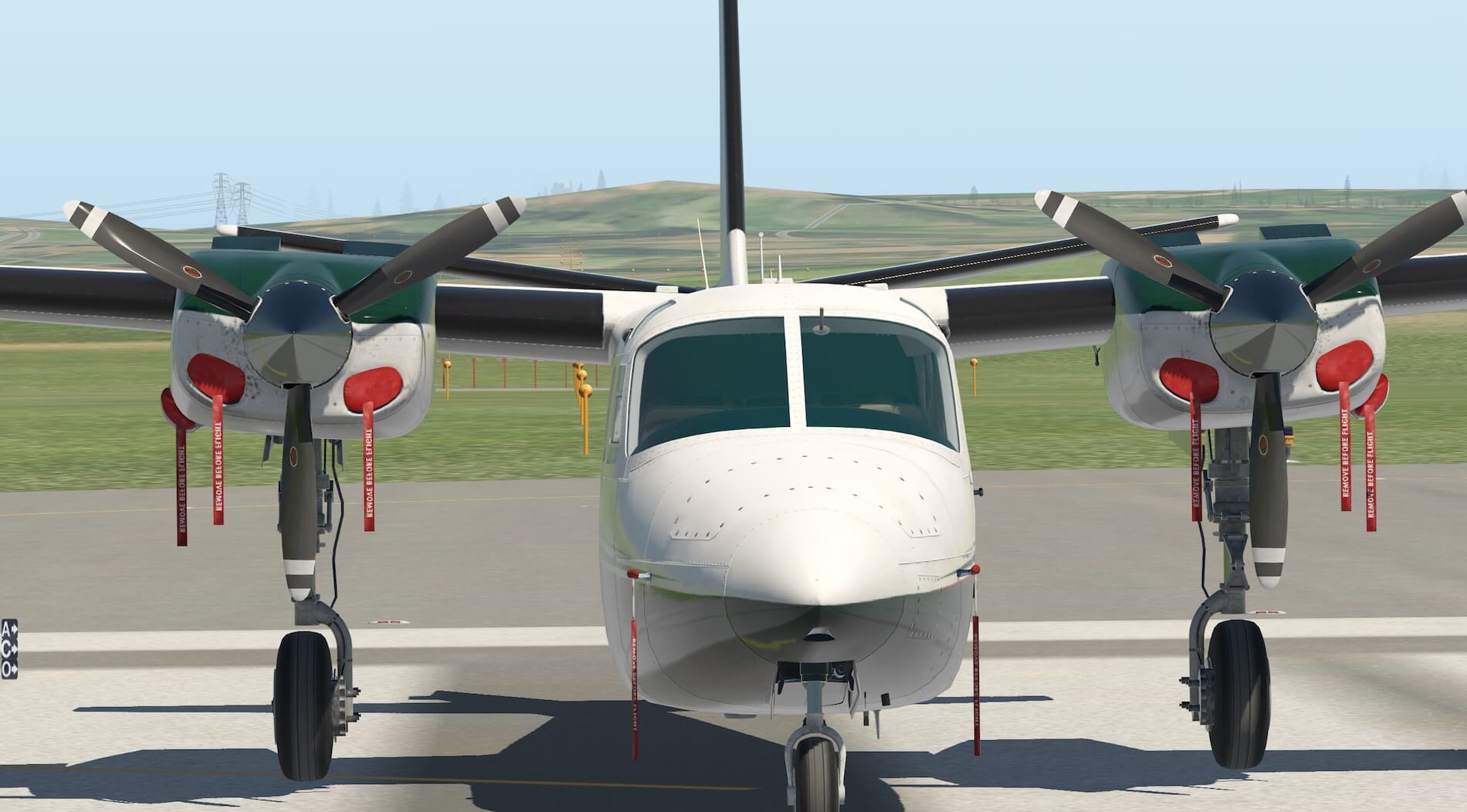
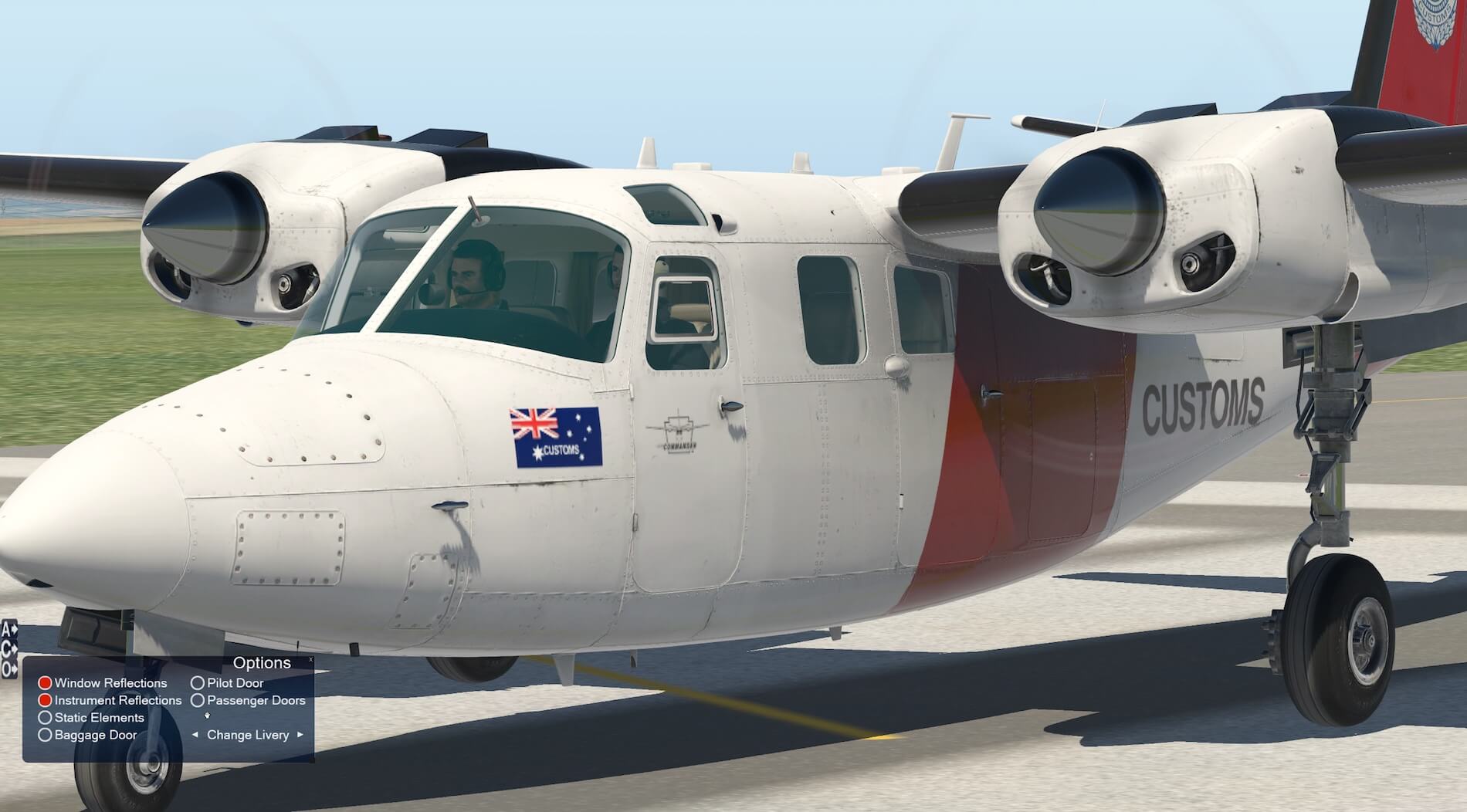


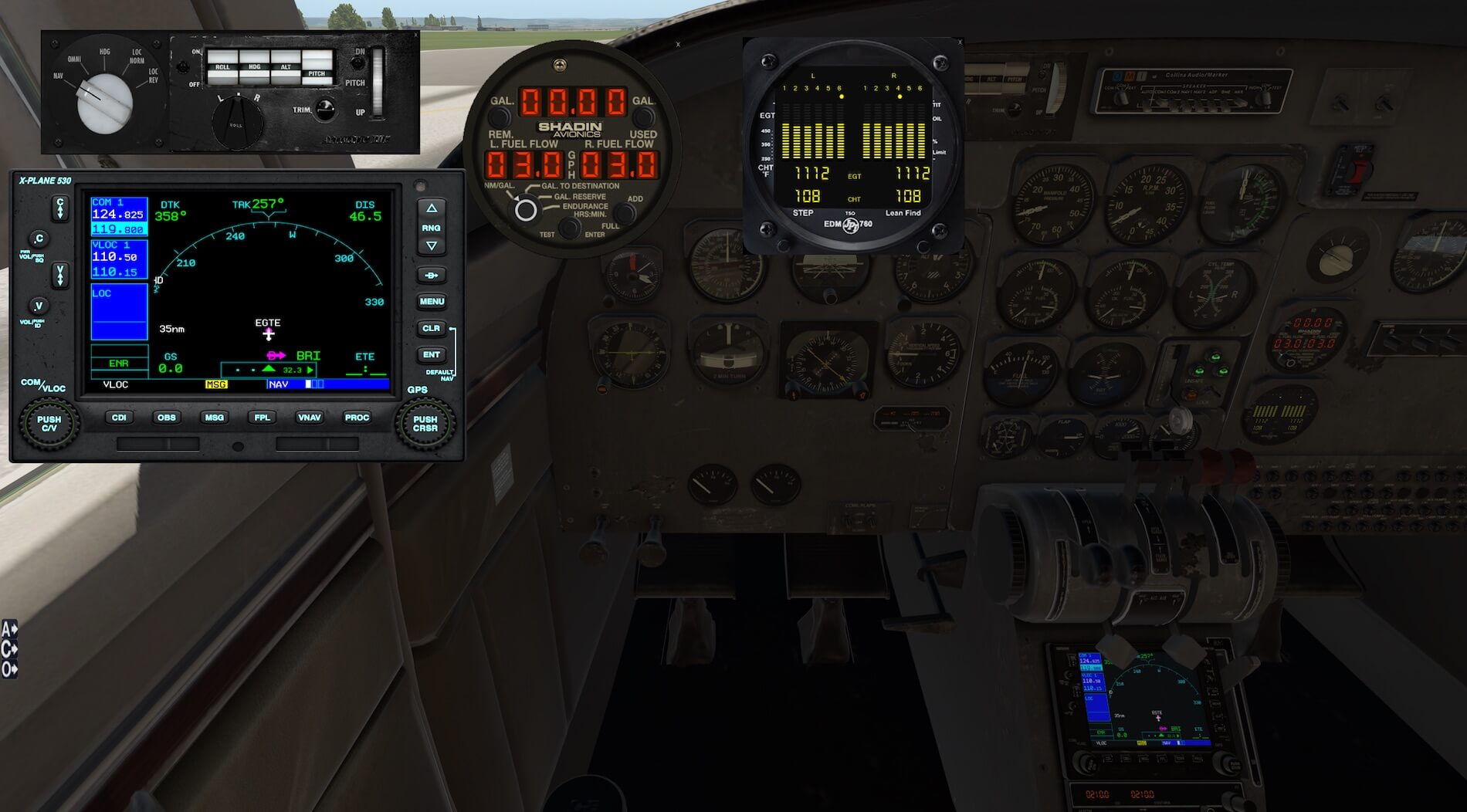
0 Comments